Related Research Articles
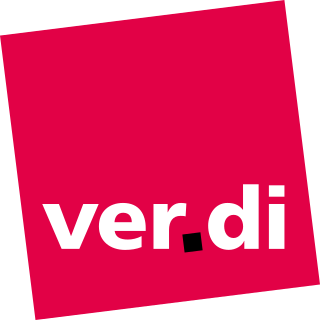
Vereinte Dienstleistungsgewerkschaft is a German trade union based in Berlin, Germany. It was established on 19 March, 2001 as the result of a merger of five individual unions and is a member of the German Trade Union Confederation (DGB). With around two million members, Verdi is the second largest German trade union after IG Metall. It currently employs around 3000 members of staff in Germany and has an annual income of approximately 454 million Euros obtained from membership subscriptions. The trade union is divided into 10 federal state districts and 13 divisions and is managed by a National Executive Board (Bundesvorstand) with 14 members. Frank Bsirske has been the chairman of Verdi since its founding until September 2019, when he was replaced with Frank Werneke.
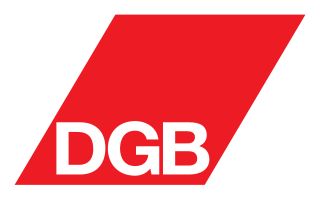
The German Trade Union Confederation is an umbrella organisation for eight German trade unions, in total representing more than 6 million people. It was founded in Munich, 12 October 1949.

The German Salaried Employees' Union, in German Deutsche Angestellten-Gewerkschaft (DAG) was an independent trade union based in Hamburg. It did not belong to the German Confederation of Trade Unions until it became part of ver.di, the united trade union for the services industry, in 2001.
Trade unions in Germany have a history reaching back to the German revolution in 1848, and still play an important role in the German economy and society.

T-Mobile Workers United (TU) is an organization of T-Mobile USA and Metro by T-Mobile employees joining together for a voice and fair treatment at work. It represents currently 500 members and is affiliated with the Communications Workers of America (CWA) and Vereinte Dienstleistungsgewerkschaft (ver.di), a large German service-sector union. TU is also supported by a coalition of community and labor groups around the world.
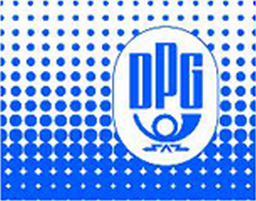
The German Postal Union was a trade union representing postal workers in Germany.
The Printing and Paper Union was a trade union representing printing industry workers in West Germany.
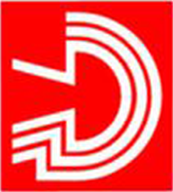
The Media Union was a trade union representing German workers in the printing, paper, journalism and arts.

The Public Services, Transport and Traffic Union was a trade union representing transport and public service workers in West Germany.
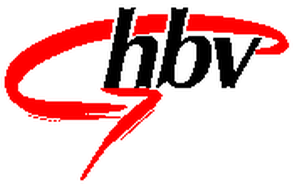
The Trade, Banking and Insurance Union was a trade union representing workers in commerce and finance in Germany.
The Union of Artists, Media Workers and Freelance Workers was a trade union representing Austrian workers in a variety of industries.
Erwin Ferlemann was a German trade unionist.
The Union of Bookbinders and Paper Workers of Germany was a trade union representing workers involved in manufacturing paper and binding books in Germany.

The Union of German Book Printers was a trade union representing printers in Germany.
The Union of Lithographers, Lithographic Printers and Kindred Trades was a trade union representing printers in Germany. It was sometimes referred to as the Senefelder Union, after Alois Senefelder, the inventor of lithography.

The General Union of Public Sector and Transport Workers was a trade union representing workers in various industries in Germany.
The International Artists' Lodge is a trade union section and former independent trade union, representing variety and circus performers in Germany.

The Central Union of Employees was a trade union representing white collar, private sector workers in Germany.
The Industrial Union of Printing and Paper was a trade union representing workers in the printing industry in East Germany.
The Union of Art was a trade union representing art, media and heritage workers in East Germany.
References
- 1 2 "Gewerkschaft Kunst". Ver.di. Retrieved 14 November 2019.CS1 maint: discouraged parameter (link)
- 1 2 "Industriegewerkschaft Medien - Druck und Papier, Publizistik und Kunst (IG Medien)". Ver.di. Retrieved 13 November 2019.CS1 maint: discouraged parameter (link)
- ↑ Ebbinghaus, Bernhard; Visser, Jelle (2000). Trade Unions in Western Europe Since 1945. Basingstoke: Palgrave Macmillan. p. 309. ISBN 0333771125.